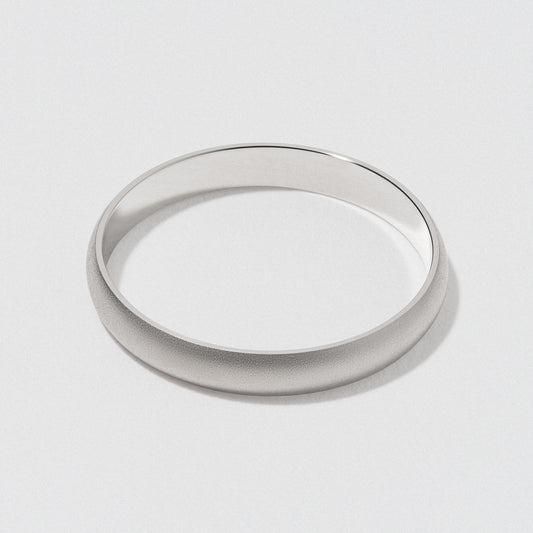When shopping for gold jewelry, you will notice you have a choice of 10 karat, 14 karat, and 18 karat gold. Visually you can barely tell them apart, sometimes, a lower karat will appear less vibrant, but most of the time, you cannot tell. We’ll talk about differences in the esthetic a little later. First, let’s talk discuss the makeup of the metals for each karat.
The purity of gold is measured using the 'karat' system, which provides information on what percentage of any type of gold is made up of pure gold. Gold 'karatage' is expressed in parts out of 24.
-
Pure gold is 24K, as all 24 out of 24 parts consist of pure gold.
-
18K gold consists of 18 parts pure gold mixed with 6 parts other metals. Expressed as a percentage, 18K gold is 75% pure gold. That's why you'll see a tiny '18K' or 'Au750' engraved on the inside of your band.
-
14K gold, on the other hand, consists of 14 parts pure gold mixed with 10 parts other metal. As a percentage, the pure gold in a 14K Gold band accounts for 58.3% of the total metal.
-
10K gold, as you can imagine, consists of 10 parts pure gold mixed with 14 parts alloy. This calculates to 41.7% of pure gold.
Alright, let’s now talk about things you will see and feel across karats.
Color:
White Gold karat options are basically impossible to differentiate. For yellow and rose the color is slightly different but hardly noticeable. Here are the minor variation you may see for yellow and rose.
-
10K Gold color: Pale-ish yellow/rose. Because it's got the lowest % of actual gold, you'll find a slightly lighter shade. Figure 5 out of 10, with 10 being a saturated, rich, almost mustard yellow.
-
14K Gold color: Warm and well-balanced yellow/rose. Side-by-side with 10K gold, 14K will look slightly more rich and warm since it's got a higher % of pure gold. Figure 7 out of 10.
-
18K Gold color: Lustrous yellow/rose. Think of 18K as the richest of the options with intense warmth and saturation. 8.5 out of 10.









